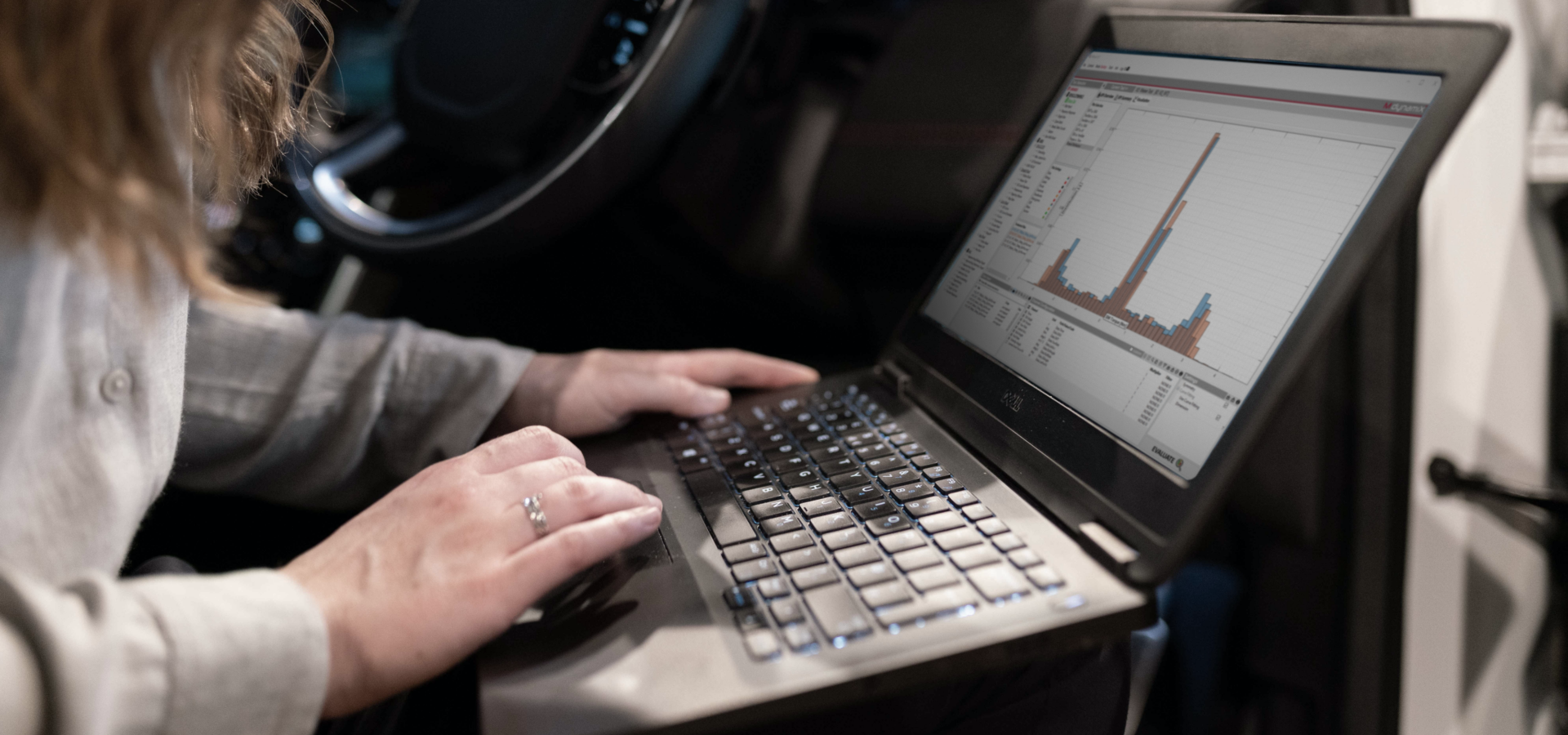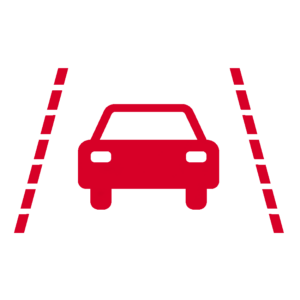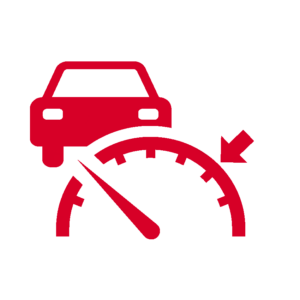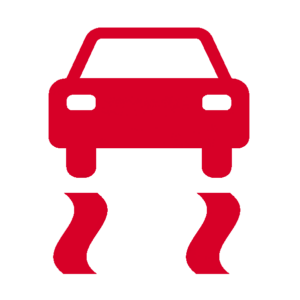Evaluation Libraries
- Weave Test
Based on ISO 13674-1
Maneuver: Straight sinusoidal driving.
Objective: Quantification of on-center handling characteristics. - Step Input
Based on ISO 7401
Maneuver: Straight driving with rapid steering wheel angle input.
Objective: Determining transient response behaviour. - Frequency Response
Based on ISO 8726
Maneuver: Straight driving with sinusoidal (constant SWA, increasing frequency) steering wheel input.
Objective: Determine the frequency response characteristics of a vehicle. - Single Sine
Based on ISO 8725
Maneuver: Straight driving with one period of steering wheel angle input.
Objective: Determining transient response behaviour at approximately contant speed. - Quasi Static
Based on ISO 13674-2 (Transition Test)
Maneuver: Curve driving with constant steering wheel angular velocity.
Objective: Quantification of on-center handling characteristics. - Steady State Circular
Based on ISO 4138
Maneuver: Quasi-steady-state driving on a constant radius with slowly increasing velocity.
Objective: Vehicle dynamics and road-holding ability. - Slalom
Maneuver: Driving the vehicle through a slalom course.
Objective: Determining the vehicle agility and as well as the steering behavior and controllability under load changes.
SAE Level 1-5
- Dropoff
Maneuver: Curved driving.
Objective: Evaluation of the center guidance performance. - UN ECE R79 – Max. Lateral Acceleration
Based on UN ECE R79
Maneuver: Curved driving.
Objective: Investigate the lateral acceleration that an ASCF system generates. - UN ECE R79 – LK Functional
Based on UN ECE R79 / UN ECE R157 / ISO 11270
Maneuver: Curved driving.
Objective: Check the lane keeping capability of an ACSF system. - UN ECE R79 – Overriding
Based on UN ECE R79
Maneuver: Curved driving.
Objective: Evaluation of the maximum steering force to override the system intervention. - UN ECE R79 – Warning
Based on UN ECE R79
Maneuver: Generic driving with driver input interrupts.
Objective: Evaluation of the HMI warning specifications. - Free Run
Maneuver: Generic driving without driver input.
Objective: Global charaterisation of the lane keeping system for vehicle benchmarking. - Hands-on Run
Maneuver: Generic driving / Curve driving.
Objective: Evaluation of steering feel with active lateral guidance. - NCAP – S-Bend
Based on EURO NCAP – Highway Assist systems – S-Bend
Maneuver: Constant curve dirving with a direction change of the road curvature.
Objective: Evaluation of steering assistance. - NCAP – Depart on Straight
Based on ISO 22735 / NACP LSS
Maneuver: Straight driving with driver enforced active lateral guidance.
Objective: Evaluation of trajectory returning capability.
SAE Level 1-5
- Approaching Stationary Target
Covers EURO NCAP – CCRS – Stationary Target (straight and curved road)
Maneuver: The ego vehicle approaches a stationary vehicle from behind.
Objective: Test for sensor performance and target selection for stationary obstacles and suitability for city driving. - Approaching Braking Target
Maneuver: The faster ego vehicle approaches a slower vehicle from behind which will suddenly decelerate.
Objective: Test for sensor performance, residual safety in motion planning and reaction time. - Approaching Target
Covers EURO NCAP – CCRM – Moving Target
Maneuver: The faster ego vehicle approaches a slower vehicle from behind.
Objective: Characterization of function design and sensor performance test. - Hunter Cut Out
Covers EURO NCAP – CUT-OUT
Maneuver: The ego vehicle follows a traffic vehicle and changes the lane to overtake.
Objective: Lateral sensor performance test and characterization for acceleration design. - Stationary Drive
Maneuver: The ego vehicle follows a traffic vehicle and maintains the set time gap. The traffic vehicle drives at a constant speed.
Objective: Characterization of time gap adjustment possibilities. - Target Accelerating
Maneuver: The ego vehicle follows a traffic vehicle which will suddenly accelerate.
Objective: Test for sensor performance, reaction time and acceleration design. - Target Braking
Covers EURO NCAP – CCRB – Braking Target
Maneuver: The ego vehicle follows a traffic vehicle which will suddenly decelerate.
Objective: Test for sensor performance, reaction time and deceleration design. - Target Cut In
Covers EURO NCAP – CUT-IN
Maneuver: A slower traffic vehicle will cut into the ego vehicles lane.
Objective: Test for lateral sensor performance, reaction time, deceleration design and reattainment of the set time gap. - Target Cut Out
Maneuver: The ego vehicle follows a traffic vehicle which changes lane and allows the ego vehicle to pass.
Objective: Lateral sensor performance test and characterization for acceleration design without driving prediction. - Transient Response
Maneuver: The driver approaches a traffic vehicle and activates ACC.
Objective: Characterization of reactivation behaviour and reattainment of the set time gap.
SAE Level 0
- Braking Straight
Covers MFDD Method
Maneuver: Straight line braking at maximum performance.
Objective: Braking performance benchmarking and ABS characterization. - µ-Jump Braking
Maneuver: Straight line braking at maximum performance with a change of the friction coefficient during the braking maneuver.
Objective: ABS control performance after the friction jump. - µ-Split Braking
Covers ISO14512:1999
Maneuver: Straight line braking at maximum performance with split friction coefficients from left to right.
Objective: Characterization of function design and sensor performance test. - Sine With Dwell
Based on UNECE R140
Maneuver: Applying a sinusoidal steering wheel motion with a dwell time at the second half cycle to a coasting vehicle.
Objective: Evaluation of electronic stability control. - Lane Change
Based on ISO 3888-1/3888-2
Maneuver: Drive the vehicle through a single or double lane change.
Objective: Determine the vehicle agility and stability during rapid steering wheel angle inputs.





